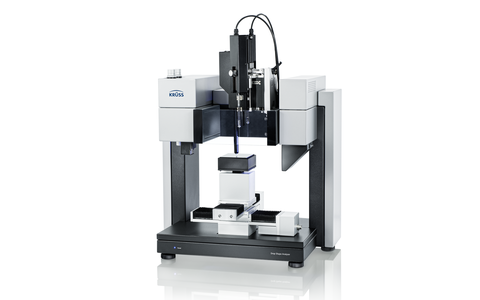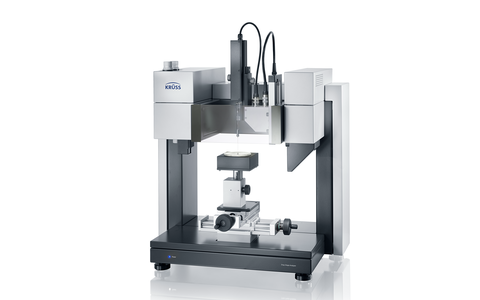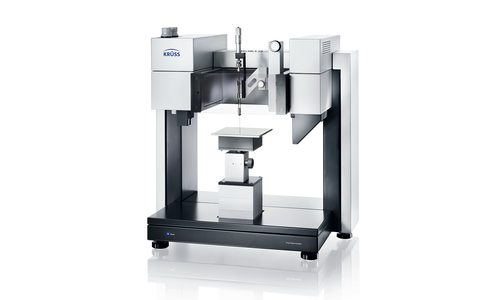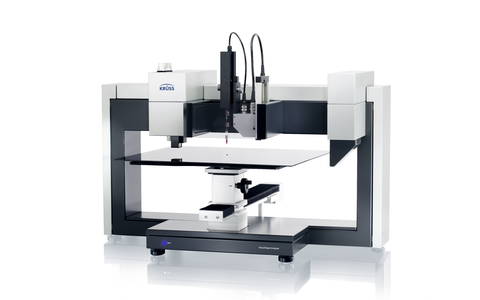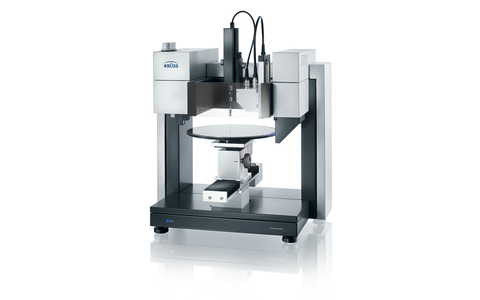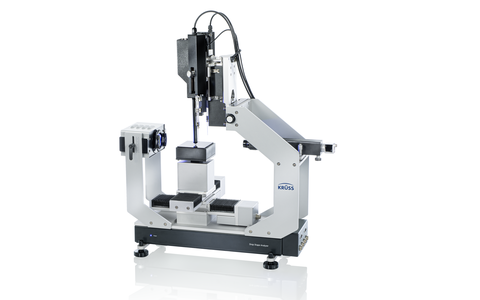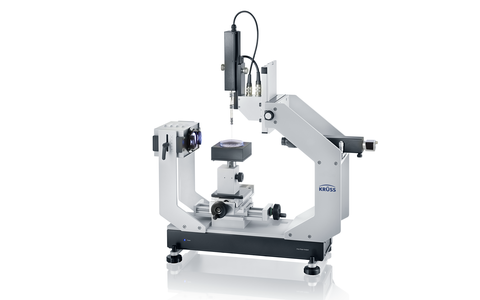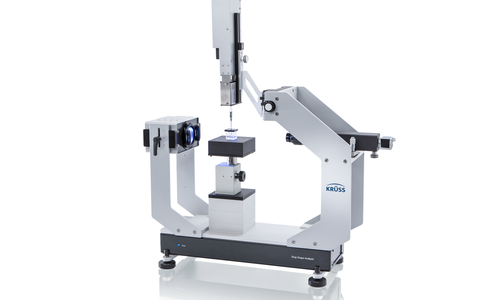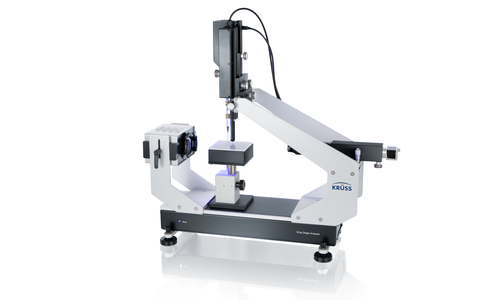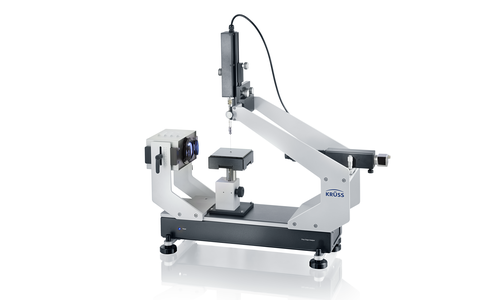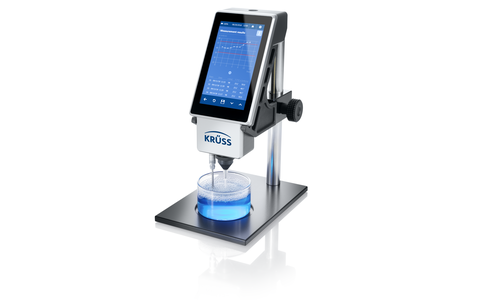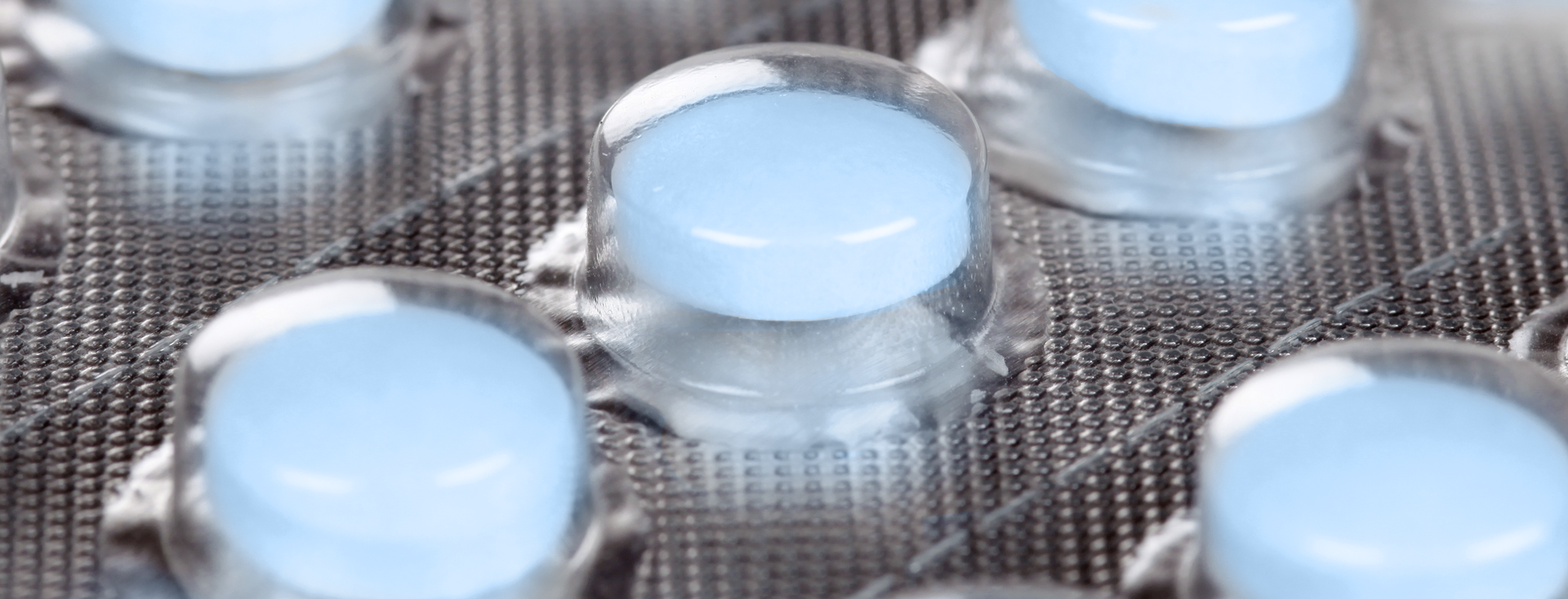
Pharmaceuticals and galenics
Interfacial chemical analyses for the production and bioavailability of medicines
Pharmaceutical active ingredients must be introduced into the body in a bioavailable manner, that is to say in a form which guarantees that they are transported to the place at which they are to act and being resorbed. At the same time, interfacial chemical aspects are also relevant, for example to improve the ability of a tablet to dissolve or to form a stable emulsion in an ointment. Our tensiometers and contact angle measuring instruments therefore play an important role in the development and quality assurance of pharmaceuticals.
Solubilizers and wetting agents in tablets and granulates
Granulates, which are compressed to form tablets, should be as hydrophilic as possible to ensure that they are easily wetted and dissolve quickly. Optimum wettability is often achieved by means of surfactants in the recipe.
The wettability can be determined by our drop shape analysis measuring instruments. Our instruments also record the change in wettability with respect to time after contact with water by measuring the contact angle. This information depicts the actual progression of wetting, as this usually improves immediately after contact until an equilibrium concentration is reached at the interface. The wettability can be specifically optimized by taking the time-dependent behavior into account. Further information for improving wetting can be obtained by measuring with physiologically relevant liquids, for example with isotonic solutions.
In the case of loose granulates and powders, the wettability can be measured based on the powder contact angle. This method also enables the surface free energy to be measured and thus allows conclusions to be drawn relating to dispersibility. This information is particularly important for suspensions which are produced by the patient himself, as the formation of lumps can lead to irregular dosage.
Investigation into the ability of powders to produce granules
Granulating a powder mixture which contains active ingredients prevents de-mixing. Agglomeration to form a granulate is frequently carried out by drying powder suspensions ("wet granulation"). At the same time, bonding agents in the suspension or the pre-coating of powders prevent the granulate from disintegrating.
The tendency of the powder to agglomerate is closely associated with its surface free energy and the ratio between cohesive and adhesive forces. These quantities can be calculated by characterizing the surface of the powder and the liquid phase, thus providing important information for optimizing the powder coating and the appropriate choice and dosage of the bonding agent.
Wetting by medicines in drop form
Wetting of the eyes or the mucous membranes of the nose by appropriate drops depends on the surface tension of the medicine. In order to improve wetting, recipes often contain surfactants, which reduce the surface tension.
Our tensiometers measure the surface tension of surfactant solutions precisely and, if required, fully automatically. Furthermore, they can also determine the critical micelle concentration (CMC). This quantity describes the efficiency of a surfactant and gives the surfactant concentration at which the maximum reduction in surface tension is achieved. This measurement can prevent expensive overdosing of the surfactant, which if anything leads to poorer compatibility.
Optimization of drop size and wetting of sprays
When developing sprays, attention is paid to the formation of spray mists which are as fine as possible, as these enable faster resorption. As the total surface area is considerably increased by splitting into many small droplets, the work necessary for atomization and therefore also the size of the droplets depend on the surface tension. The subsequent wetting of the tissue by the droplets is likewise dominated by the surface tension. For these reasons, surfactants, which reduce the surface tension, are added to sprays.
As well as the static surface tension and the CMC, information relating to the dynamic behavior of the surfactant is also important. The equilibrium concentration of the surfactant at the surface is frequently not reached during the short flight time of the droplets so that the surface tension is higher than in the solution in steady state. Our stationary bubble pressure tensiometer measures this dynamic value of surface tension over a large range of surface formation speed.
Investigations into the emulsifying capability of ointments and microemulsions
Ointments are frequently emulsions of hydrophobic substances in water and other hydrophilic liquids. Surfactants are used as emulsifiers for producing and stabilizing these emulsions.
The emulsifying effect of a surfactant is based on the reduction in interfacial tension between the droplets and the bulk phase. Our instruments feature a range of methods for the precise measurement of the interfacial tension.
The dynamic interfacial tension is important for fast production processes where the mixing of emulsions is involved. A drop volume tensiometer measures this speed-dependent value and helps in the choice and dosage of the emulsifier.
In order to make hydrophobic substances bioavailable, they are also administered in the form of microemulsions, which behave thermodynamically like aqueous solutions. Microemulsions are often only formed in a narrow concentration range. The interfacial tension drops by several decades in the vicinity of this range. Spinning drop tensiometers are developed for the extremely low interfacial tension range down to 10-6 mN/m. Important knowledge relating to the optimum formulation of microemulsions can be obtained by performing analyses with this type of instrument.

